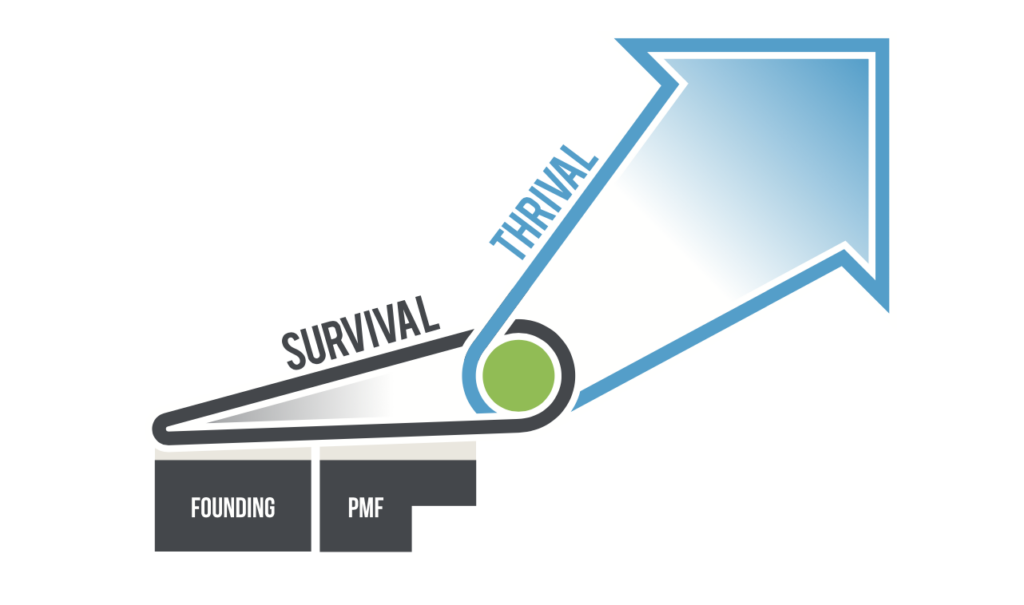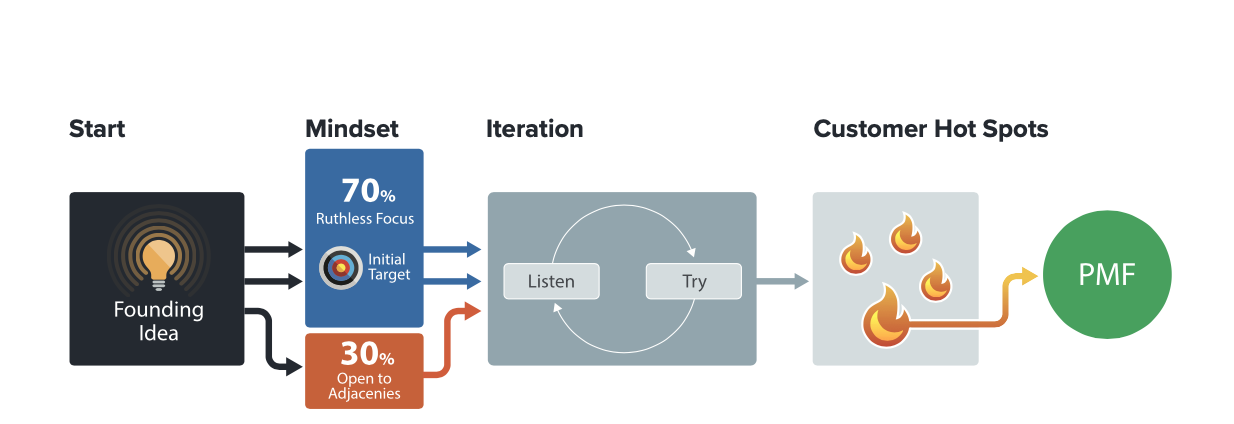
Finding Product Market Fit (PMF) for Enterprise Startups

- Enterprise Product Market Fit (PMF) is different. It requires paying customers who use the product and recommend the startup’s product to their peers.
- The path to PMF involves listening, experimenting, and iterating.
- Iterating not just on the product, but also on the target customer and the pain point.
PMF is a critical milestone and a well-documented concept. Lots of great articles defining PMF and how to find it have been written for entrepreneurs. But they primarily focus on PMF for consumer startups. So, we’re going to cover what’s different about PMF for enterprise startups, and the particular challenges that entrepreneurs confront in trying to find it.
As we’ve said many times, while PMF is a hugely important milestone for the enterprise startup, PMF alone is not sufficient to unlock growth. Go To Market (GTM) Fit is the real key to unlock growth and we’ll be writing lots about this soon. If you can’t wait you can listen to one of our recent podcasts on Finding GTM Fit.

PMF for enterprise startups: it’s different
Paying reference customers
In the consumer world, PMF is often defined by adoption or usage. Enterprise PMF is different.
Enterprise PMF isn’t just about adoption and usage. It’s also about paying reference customers. That is, good customers who (1) pay you money, (2) actively use your product, and (3) are willing to recommend you to others. Paying reference customers are the essence of enterprise PMF.
There are some exceptions to this rule. It doesn’t apply, for example, to enterprise startups that are following a “freemium-and-upsell model,” where early adoption doesn’t necessarily mean customer payment. However, even with freemium-and-upsell model, PMF involves validating the startup’s ability to convert from free to paid.
How do you know?
Deciding if the enterprise startup has achieved PMF can be confusing because of the number of different signals coming from customers, the market, and the team. How do you know?
Bob: “The thing we figured out is that the founders and the product team don’t decide PMF. The customers and the sales team decide. When it happens, you can see it and feel it. Customers are willing to give you money. Customers spend their valuable time with you and your product.
Sales reps see an improvement in getting customers to second meetings. Customer feature requests pile in as customers operationalize your product.”
A classic mistake is to declare PMF after hitting some product-focused milestones and landing a couple of trial customers. Product teams don’t decide PMF. Customers decide PMF. They vote with their money and their time.

Path from Founding Idea to Product Market Fit
There are three specific signs of enterprise PMF:
- Paying Customers. This is a huge signal of success. To put this in perspective, the sponsors inside early customers had to put their necks on the line and tell their bosses, “I want to buy this new product from some new little company that you’ve never heard of and may not be around in 2 years.”
- Real usage. Paying customers by itself is not enough. What matters, in the end, is that customers use the product in operational situations where business processes depend on it. Ironically, loud customer complaints when product issues happen is a sign of importance (but better to avoid issues).
- Recommendation/Virality. Customers start recommending the product to their peers, and inbound customer interest accelerate.
Finding PMF: the path through the woods
Finding PMF resembles a pioneer searching for a path through the woods. It involves starting with a Founding Idea. Constantly listen, iterate, and improve the product and the idea. Rarely does the Founding Idea and product conception perfectly survive contact with the real world of customers. Be open to adjacencies that could uncover a customer hotspot of pain and demand, but not so many adjacencies to be unfocused. Then, with hard work and luck, converge on the customer hotspots that achieve PMF. Finding the path through the woods is an intense, noisy, scary experience that is a mix of structured analysis, iteration, exploration, and good old- fashioned customer-product intuition.
Look out for our upcoming Beta e-chapter on finding GTM Fit, the next stage from PMF. Or check out this talk from Tae Hea on finding GTM Fit